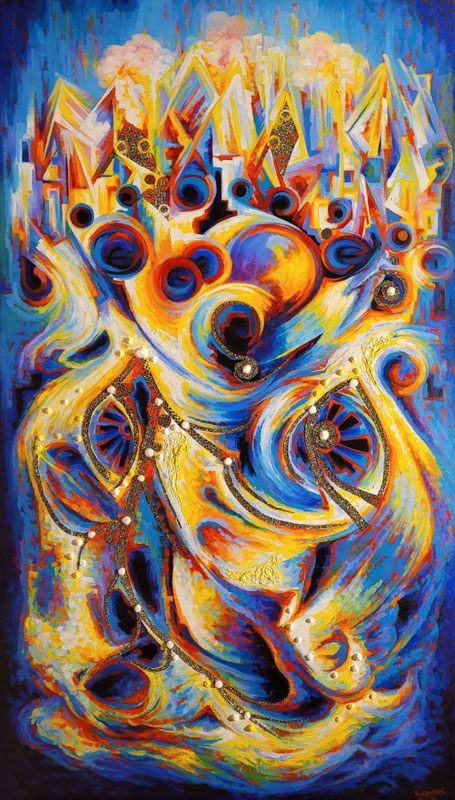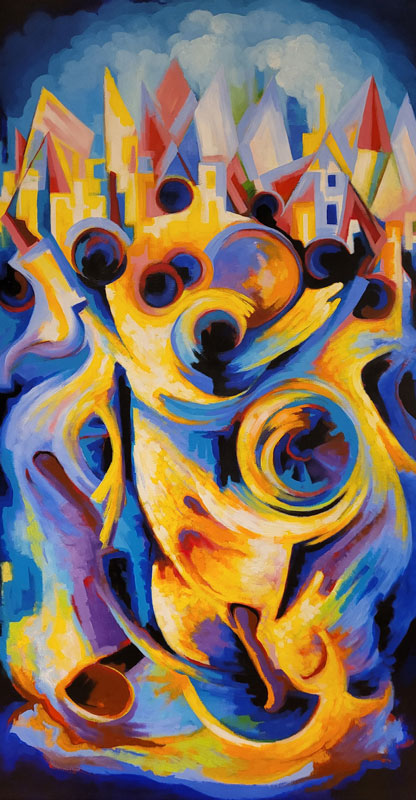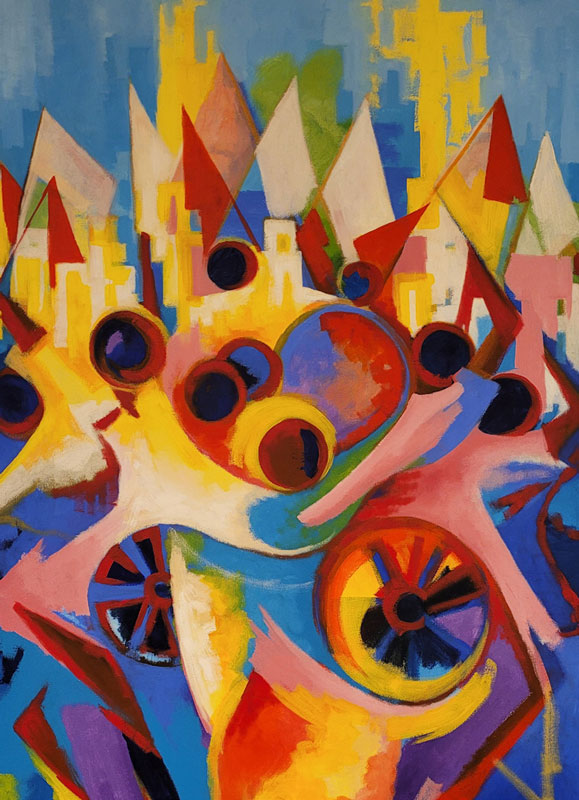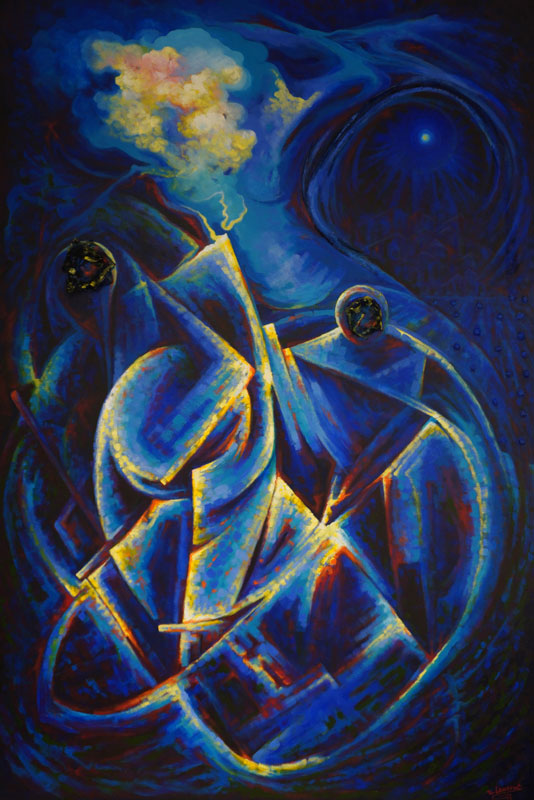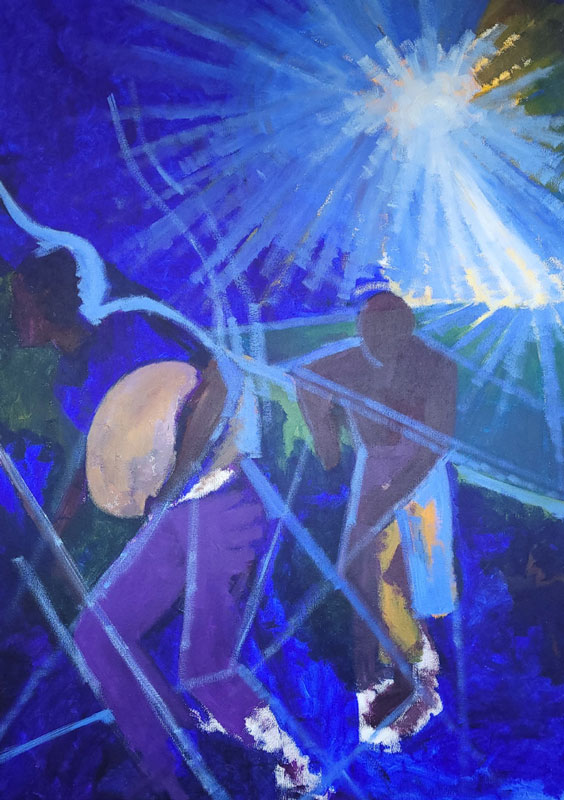In recent years, the general representation of slavery, including its representation in art and literature, has gained considerable significance in practice as well as in theoretical, academic and critical reflections, and in cultural activities such as exhibitions, festivals, broadcasts, media, monuments and commemorative activities. The emergence of social media has made it possible for any citizen to attempt to question the educational curriculum or official discourses on slavery in general and on the so-called triangular trade and its consequences in Africa, America and Europe.
All this has given rise to a different way of thinking about the enslavement of Africans and a new approach to modernity itself, that is to say as a multifaceted phenomenon. Since modernity starts with the arrival of European colonialism in America, understanding it requires an analysis of slavery and the birth of racism based on skin colour. Representing slavery or those who are its victims, namely African captives, does not only imply that the artist or the writer should solve an aesthetic problem, it is also a way to take a position faced with and within this modernity.
Having said that, the work of the contemporary artist on the memory of slavery can only be a poetic work—a reflection on art. The artist is confronted with a collection of images, depictions and writings that allow him to question the visible, the aesthetic or the ethics. He (or she) is exposed to several ways of expressing slavery through the art of the past and of today, to ways of comparing memory and representation while reshaping himself (or herself) in the ever present modernity. It is in this context that, by examining the images and writings on slavery in the United States, Renold Laurent chose to highlight the escape from slavery and the celebration of the end of slavery by creating two abstract works. How could we understand this artistic choice? What can the abstraction of a historical phenomenon as concrete as slavery suggest?
Although Laurent is best known for his abstract works, he has never abandoned representational art, even though he most often creates these on commission. That said, in the context of this exhibition, he could have given us representational works which would have the benefit of speaking to us more directly. However, the iconography of slavery is, in a way, codified: rows of captives, captives spread out like merchandise in the slave traders’ holds or on the decks; slave markets, slaves working in the fields or performing tasks related to their circum- stance; scenes of punishment; domestic slaves serving their masters, runaway slaves, dance scenes, and scenes of celebration after the abolition of slavery.
These images, created by white artists in circumstances reflecting various slavery or abolitionist ideologies and sometimes mere concerns of artistic description, pose real problems for the contemporary artist when it comes to drawing inspiration from them in the context of the memory of slavery. Added to these images are numerous commentaries on American slavery.
Many of these commentaries portray the image of submissive slaves resigned to their fate, but in reality those enslaved have always known how to react against their masters and their circumstances by all sorts of means. It is this image that Laurent criticises in the works he displays in this exhibition. Abstraction gives him a voice to challenge this image.
Laurent draws inspiration from traditional iconographic collections, reinterpreting them, transcending them, putting them in abstract form. This work of reinterpreting realistic or figurative works is not unusual of the artist’s style. It has been part of his artistic research for many years. One of his best-known reinterpretations is his abstract reworking of Liberty Leading the People by French Romantic painter Eugène Delacroix. For his works on slavery in the United States, Laurent adopted this same process of artistic and aesthetic transformation to pre-existing images. In doing so, he moved away from representation towards evocation.
His works evoke two moments. One is the period of slavery showing not submissive slaves, rather the escape from slavery, where slaves fight to regain their freedom. He then refers to the end or abolition of slavery, marked by parades celebrating the event.
The transformation of realistic images into abstract works emerges both as an act of protest, as just mentioned, but also as a demonstration of the challenges of memory that the period of slavery poses. We know that even today, despite all the civic advances, the lives of Black people in the United States still need to be defended. Given the historical periods evoked in the United States, and since the works of Laurent are not purely representational, they function as commemorative plaques of the resistance of enslaved Africans to regain their freedom. Laurent shows us that the African, even when enslaved for several generations, had never forgotten that his ancestors were always free. The 2019 film Harriet by Kasi Lemmons illustrates very well that it is from this memory that the enslaved African draws the strength to brave all dangers to obtain this freedom.
Ode to Escaped Slaves
Laurent’s works, although they correspond to his aesthetic of abstract rereading of realist or representational works, are, for this exhibition, the fruits of veritable documentary research. The artist is not only satisfied with revisiting the iconography of slavery in the United States. The themes he chooses to address in his two works are therefore derived from a historical consciousness. Indeed, the history of Africans revolting or fighting against slavery has long been obscured in conventional American historiography. The first work presented by Laurent is titled Marooning, when the slave snatches his freedom in reference to this concealment of the resistance by enslaved Africans in the United States. Escape from slavery was one of the most effective means of protest against the bondage of Black people. To do this, Laurent has chosen abstraction as his artistic expression. What does this suggest, when we know that, for more than one of them, a figurative representation would have the benefit of a direct reading, minimizing ambiguities as much as possible?
While Laurent’s work wants to revive the escape from slavery, it is the moment of escape that interests him—the escaped slave’s confrontation with a hostile environment. It is a moment where tension is at its highest. In this context, abstraction insists that the viewer question the smallest details, the smallest features of the shapes, points and lines, while imagining the landscape. In Marooning, when the slave snatches his freedom by Laurent, blue dominates the entire work. This colour is almost fetishised in the artist’s aesthetics, but it takes on a particular importance and significance here. This blue is the effect of a light that not only illuminates the fugitives by enveloping them, it is this light of awareness of their humanity that guides them. It is determined by a plain white dot at the top right of the painting. This bluish light unites the fugitives in a kind of solidarity. There is a movement that sweeps them up in a whirlwind that seems to make them inseparable and perhaps invincible in their determination.
The Fragility of the Celebration
The second work is titled Procession of slaves celebrating the abolition of slavery in the United States. Unlike the first canvas, in which a blue light illuminates the shapes in a circular motion that harmonises them, the strokes in this second work are fragment- ed. The yellow that serves as an outline of the shapes in Marooning, when the slave snatches his freedom completely pervades this painting. It is the colour of the sun, of joy, of celebration. There is a lot more movement in this painting, which undoubtedly indicates a loss of concentration, a relaxation, a utopian vision of the future. At the top of the painting there is a burst of joy, not to mention the small torches that signal the small groups marching in procession, sometimes in a disorderly fashion. But the artist is not fooled. He shows that the danger is not completely over despite this change of situation. He inserts small cotton balls into the canvas to signify that, despite the abolition of slavery, the cotton fields are still there and still form the basis of the economy of the American South. After the excitement of the party, it is necessary to return to reality, to wake up to the understanding that other obstacles are now emerging, and that they will not be easier to overcome.
As mentioned above, the artist’s work on the memory of transatlantic slavery could not go without questioning modernity or himself in regard to the former. Slavery re- quired a completely different definition of humanity. It made humanity a plural entity to justify itself. Skin colour determined one’s place in the human race. If the aesthetic shapes the artistic work, the artist’s work on slavery must necessarily question this aesthetic and compare it with history, for the scars and traumas at stake are real and are still dividing the world. Renold Laurent has chosen to evoke the memory of slavery in the artistic expression that has always been considered the culmination of modern art. In this way, he brings together two extreme expressions of modernity: transatlantic slavery and artistic abstraction.
Translated from original French text.

